David & Julia Holloway Vineyard Photos
Toggle your F11 key and it will give you full screen
Wine... a toast to your health!
More below about fruits & veggies, wine health benefits, vines, winemaking and drinkin' in general.
Chambourcin grape
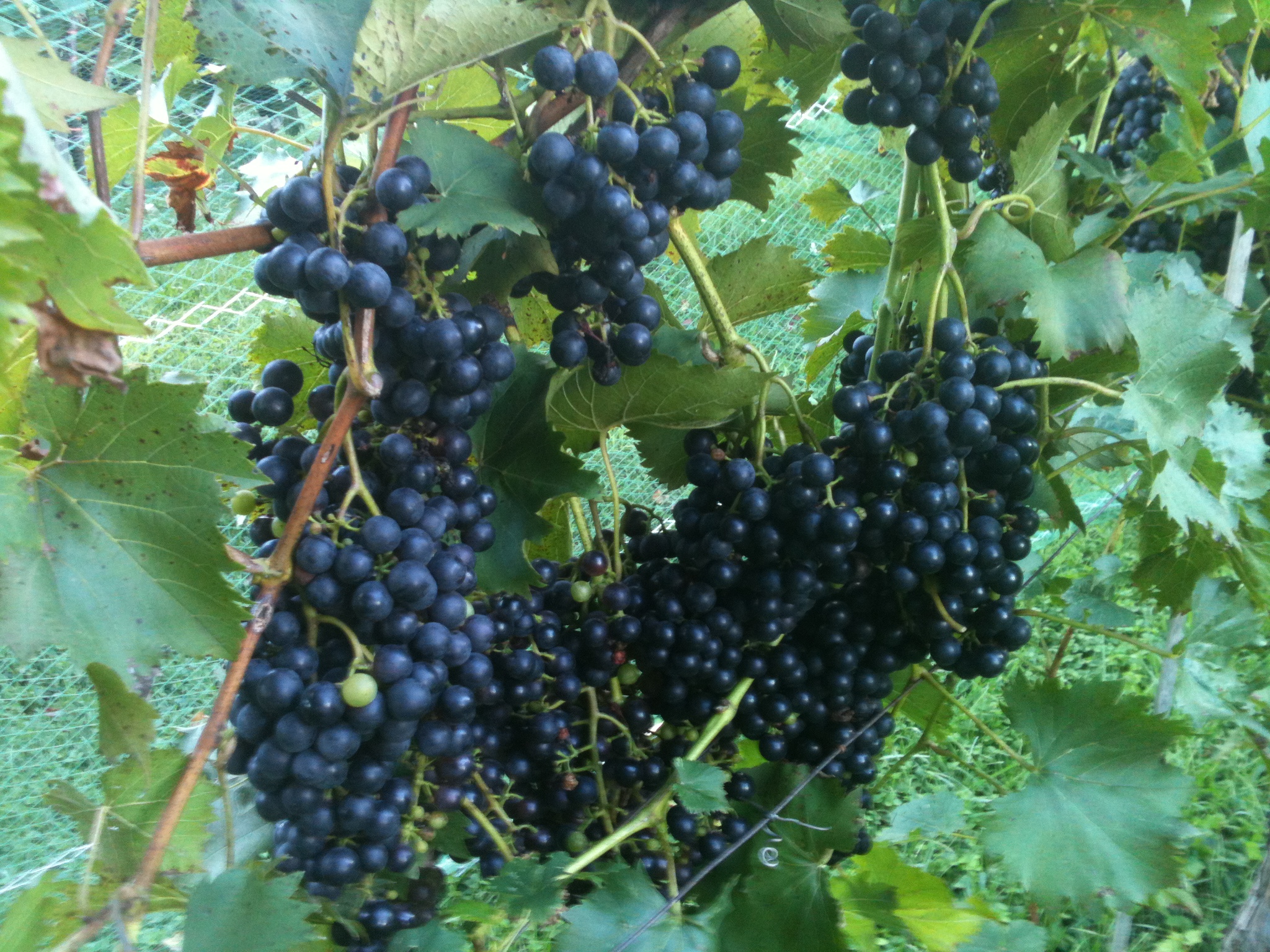
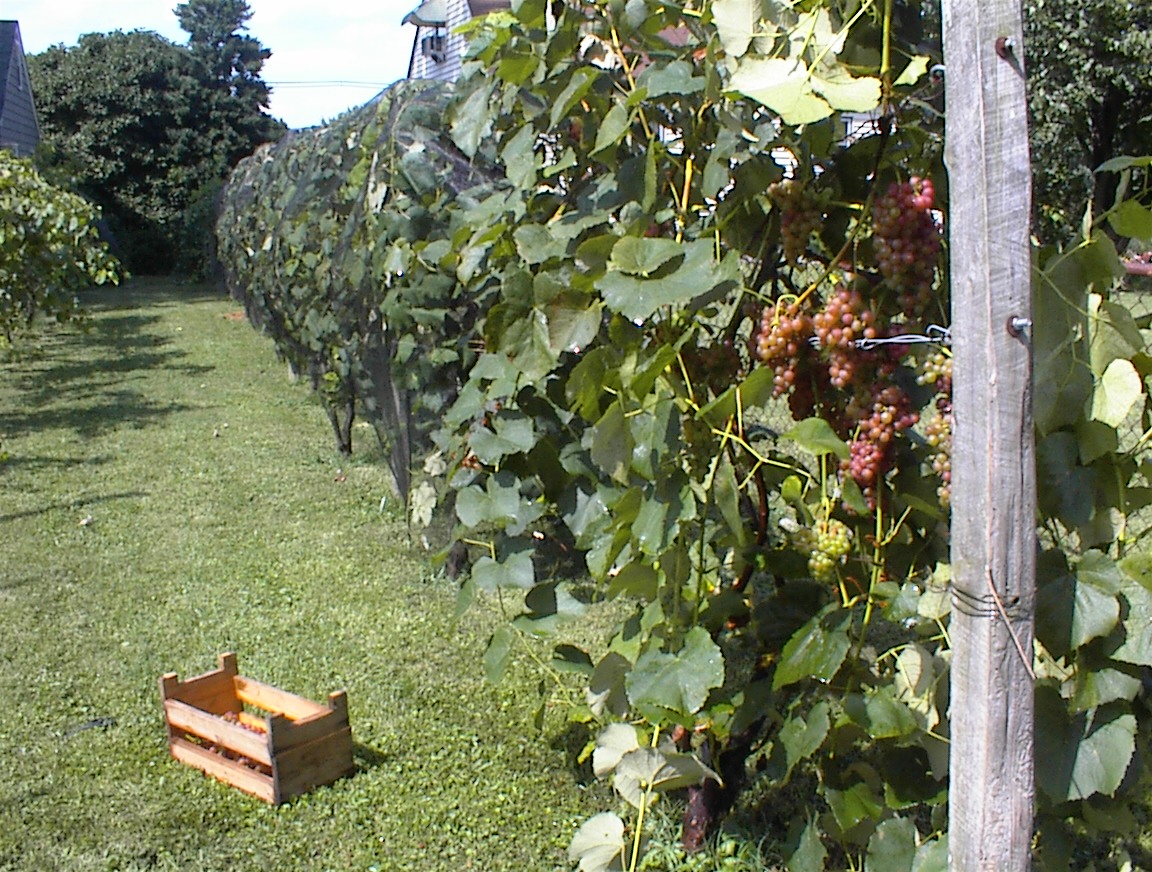
(bird netting on grapes)
Concord Grape
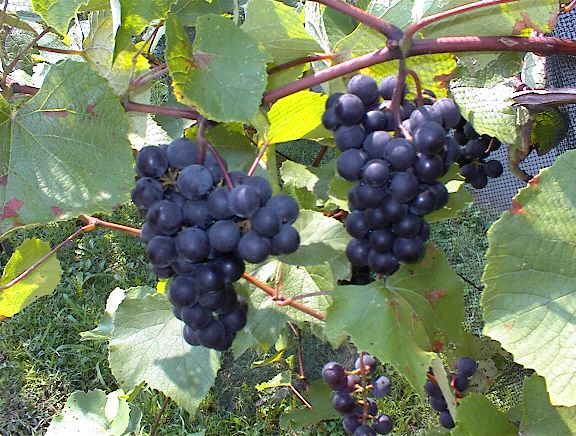
Chambourcin grape (pron. shambursen) - this makes a dark red wine.
wine.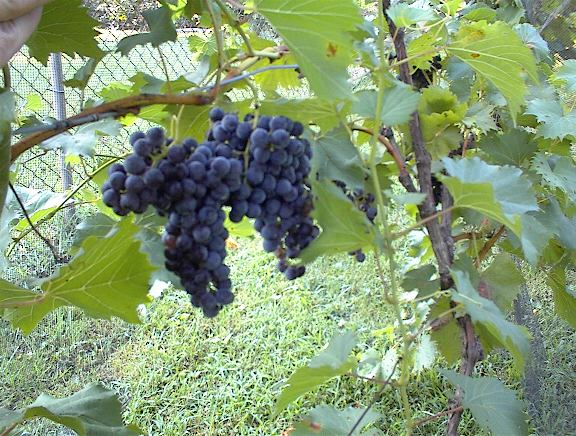
Robbin's nest and Baco Noir grapes.What
do you feed your babies?
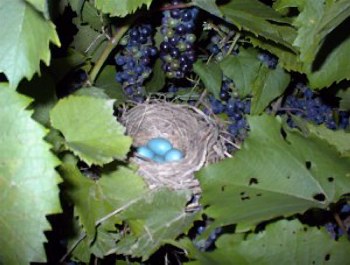
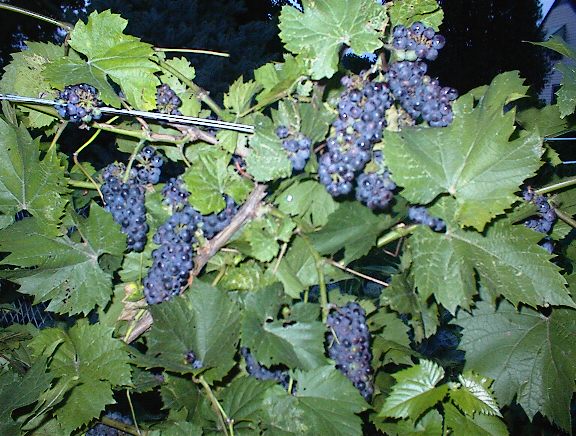
Steuben grapes in baskets
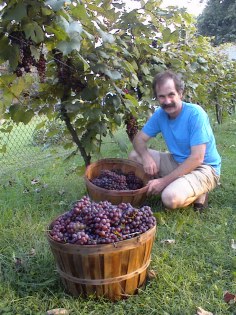
Canadice seedless eating grapes - Seelbach Hotel recommended gourmet
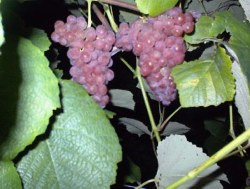
2003 - Steuben grapes in Julia's secret herb garden
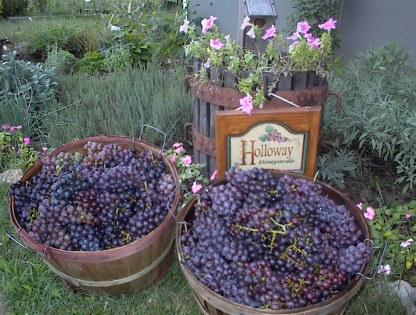
Steuben
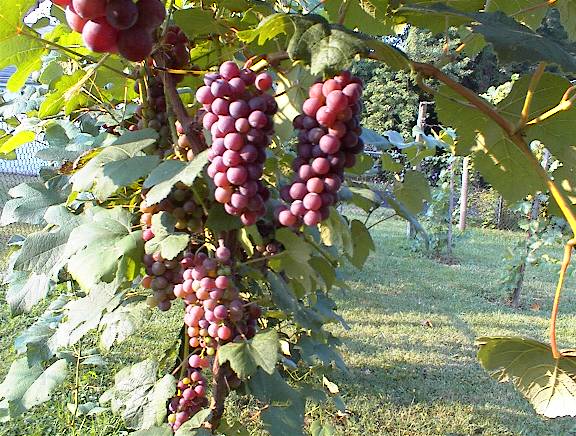
Pinot Noir Grapes (pron. peen-yoh nwah) - this is the primary Champagne grape and is combined with Chardonnay
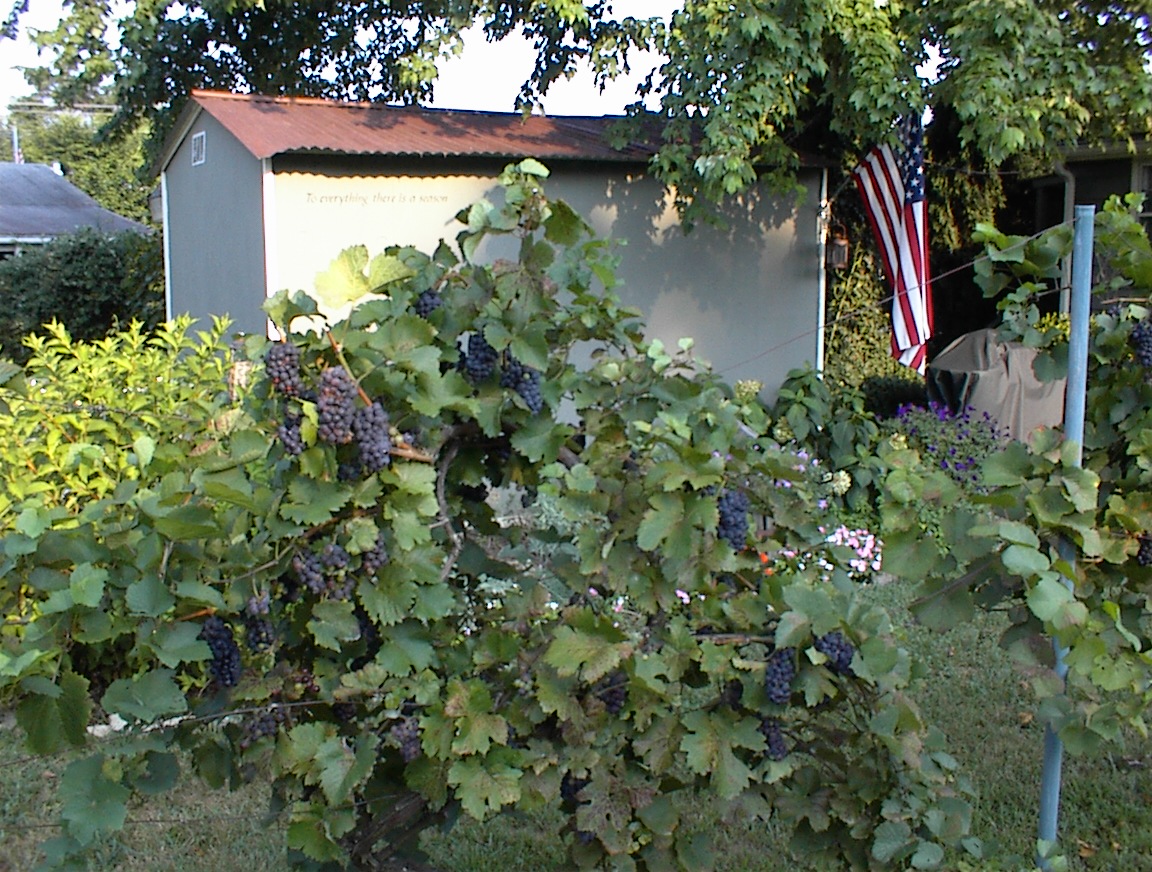
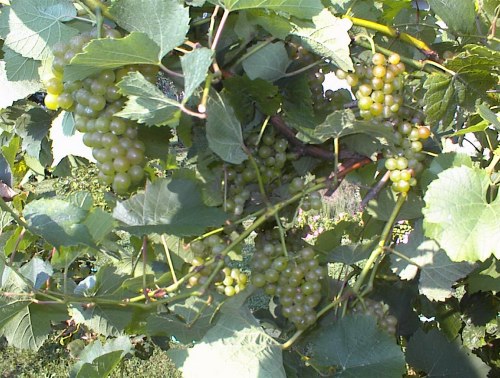
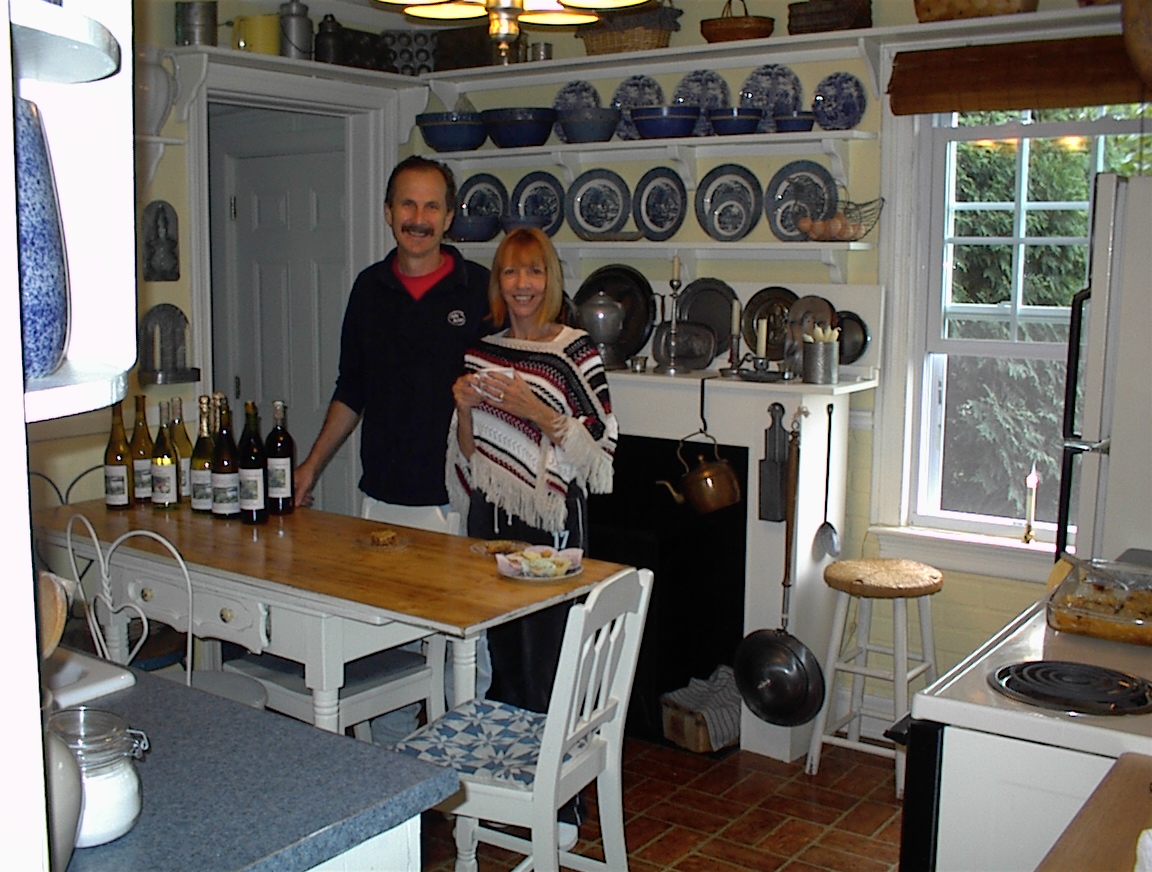
David's & Julia's
hobbies are gardening and vineyard care!
Also go to link Julia's Secret Garden that's 'gahden dahling' with over 160 varieties of plants. This 'mahvelous' couple are members of the Kentucky Vineyard Society. Sparkling wine is a feature of breakfast on the weekend. Why wait til your 50th anniversary to celebrate life?
Other fruits & vegetables that David grows:
Asparagus (New Jersey Giant), Beets, Broccoli, Brussel Sprouts, Cabbage, Collards, Elephant Garlic and several other types, Onions, Shallots, Spinach, Swiss Chard, Yard Long Beans, Potatoes (Kenebec, Irish Cobbler, Red), Sweet Potatoes-Beauregard, Heirloom Tomatoes (many varieties), Peppers (Green, Red, Yellow, Purple Bell, Tabasco, Pimento, Sweet Cherry)
Fruit:
Blackberries: (Black Satin and Navajo) Blueberries (several varieties) Cherries Kiwi Nectarine Raspberries (Red, Black Cumberland, Royalty Purple)
Rare and specialty:
Brown Turkey Fig (actually an inverted fleshy flower)
Heart Nut ( a heart shaped Japanese hickory)
Persimmon - var. "Evelyn" seedless
Kousa Dogwood - produces flowers and a small custard like fruit
Saskatoon Berries - actually a "Pome" fruit rather than a berry that was a Plains Indian staple-a gift from God used in their winter food known as "pemmican". Pemmican consisted of animal fat, saskatoons, and seeds, and could be carried in their pelts.
Spearmint - for Mint Juleps during KY Derby time
Stevia - a sugar substitute
Technical Health Benefits of fruits, grapes and wine:
Keywords: polyphenols, flavonoids, antioxidants, tannins, quercitin, resveratrol
|
Polyphenolic Flavonoids: concentration in
Non-Flavonoids in Red Wine:
Summary: The cardiovascular benefits of red wine are a result of its alcohol and flavonoid content. Alcohol alone in doses of 20 to 30 gm/day can decrease CHD by 40%. The alcohol content of red wine is responsible for the effective absorption of flavonoids and tannins. Red wine also contains a large amount of folic acid, other vitamins and potassium and magnesium, which have beneficial cardiovascular effects.
|
Our Music Products | Contact | References | About Us | FAQ | Wine | Women | Song | Trumpets & Crumpets | Julia's Secret Garden | Fun - EStuff | For Sale